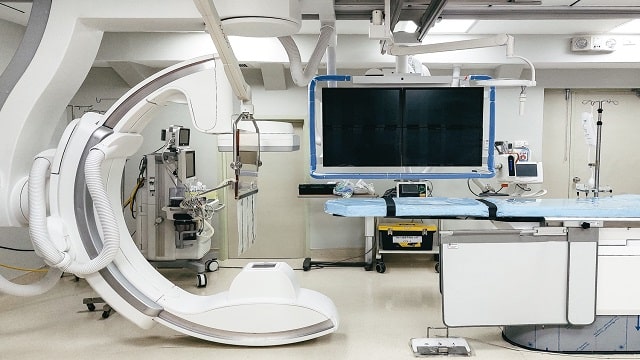Catheterization Laboratory
Catheterization Laboratory (Cath Lab) or also called cardiac catheterization and angiography is an invasive diagnostic cardiology medical procedure or action. This procedure is performed using X-rays to help display images of blood vessels in various organs of the body.
For example, a cath lab examination of the heart to detect disease, narrowing, blockage, or dilation of blood vessels. The tools used in this examination can provide detailed image results. Thus, this procedure can help doctors provide an accurate diagnosis in carrying out surgery or Percutaneous Transluminal Coronary Angioplasty (PTCA).
The catheterization Laboratory is equipped with many sophisticated and modern equipment. These tools will help doctors perform diagnostic and interventional procedures more easily with minimal invasion. The cath lab procedure itself is more widely used for heart problems, such as stent placement and coronary angiography.
In addition, cath lab procedures can also be used in various other fields, such as neurosurgery, orthopedic surgery, interventional radiology, and many more.
Cath Lab Procedures
Before undergoing a cath lab procedure, patients and their families should discuss their medical history and current or planned medications with a cardiologist. The procedure is performed using a tool such as a mini cath lab that is specifically designed for certain procedures, such as the installation of a stent or heart ring (PCI/PTCA) and cardiac catheterization.
In addition, cath lab procedures are also often used in the installation of temporary or permanent pacemakers and cardiac tapping to check for congenital heart defects.
The catheterization laboratory procedure itself consists of several stages, namely:
- The first stage, the doctor will give local anesthesia before the procedure is performed. Anesthesia can be given to the right or left thigh crease or the right or left hand. During this stage, the patient remains awake and able to communicate with the doctor.
- The second stage is the catheter. This stage is done by inserting a small tube through the aorta blood vessel at the coronary artery mouth position.
- The third stage, the doctor will insert contrast fluid through the tube using X-rays. The flow of fluid will be continuously monitored through a monitor to show whether there is narrowing or not.
After all the steps are completed, the doctor will explain and provide recommendations for the next steps. For example, whether the patient is sufficient with regular treatment or needs other actions, such as balloon and ring installation or bypass surgery.
Why Do a Cath Lab?
Examinations that visualize the arteries and chambers of the heart, address stenosis or other health problems are performed as preventive and curative measures. Catheterization laboratory procedures can be used for early detection as a preventive measure against many health problems.
For example, early detection in people who have a history of heart health problems. This is certainly very important to help reduce the death rate as a result of these health problems.
Through cath lab action, doctors can determine the right medical action for patients. Thus, doctors can also provide recommendations for further treatment based on the results of angiography. For example, the installation of a heart ring, intervention using a balloon, or bypass surgery.
Where to Do Cath Lab?
The catheterization laboratory procedure is performed in a hospital that has cath lab facilities or cardiac catheterization and angiography. The examination is performed by a doctor with the assistance of medical personnel. Make sure you have asked for all the information before the procedure is performed.

